Best Places to Buy an Old House 2009: Urban Suburbanites
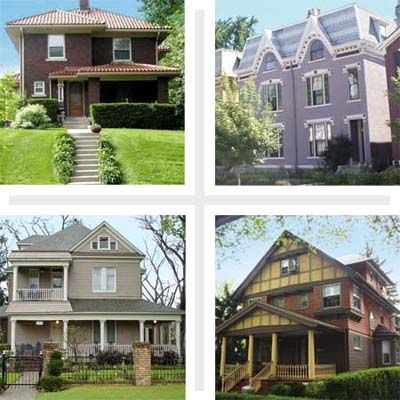
Unique, tight-knit neighborhoods are precisely what we looked for in selecting the winners of our second annual Best Old House Neighborhoods contest—places that might not be on your radar but deserve to be. Like last year, we relied on our good friends at PreservationDirectory.com to help us contact thousands of neighborhood groups, real estate agents, and preservation societies to get their takes on the best places to track down, fix up, and fall head of heels for older homes.
This year, among the winners, we discovered eight great spots like Richmond Hill, Queens, that are close to big cities, but offer larger houses and yards, and a more tranquil lifestyle, with all the amenities of the big city just minutes away.
Temescal Neighborhood, Oakland, California
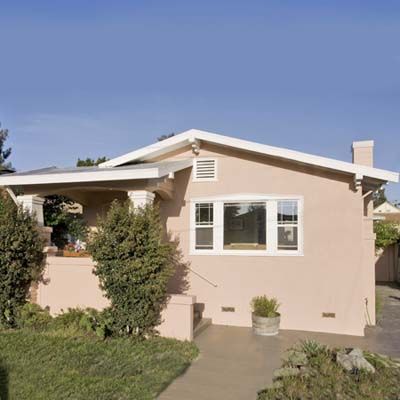
Located in North Oakland, just a few miles from Berkeley, the Temescal neighborhood, named for the creek that runs through it, was once a thriving Italian-American village and the terminus of Oakland’s streetcar line. In the past few years this long-overlooked nabe has been attracting buyers from pricier NoCal neighborhoods to its colorful, stucco-covered bungalows, many of which have small but sought-after backyards. Some people first discover Temescal while visiting its popular Sunday farmer’s market or the growing number of restaurants, delis, and bakeries that are opening here, including the famed Bakesale Betty, which purportedly sells the best fried chicken sandwich on the planet. “It seems a lot of people are starting to look for places in Temescal now,” says Deidre Joyner, a Realtor with Red Oak Realty. “That’s probably because the two- and three-bedroom houses here are perfect starter homes.” Temescal is also close to bus lines and freeways. And you can be in downtown San Francisco in less than 20 minutes, barring heavy traffic.
The Houses:
Many single-family homes here are 1920s bungalows that, while modest from the outside, are packed inside with architectural details, such as built-ins, moldings, wainscoting, and window seats. These houses start between $500,000 and $600,000. Pricey, yes, but that’s a heck of a lot cheaper than a house, especially one with a yard, will run you in San Francisco or other nearby Oakland neighborhoods, such as Rockridge.
Why Buy Now?
If you found yourself priced out of the Bay Area during the housing boom, now’s the time to give it another shot. Temescal borders pricier areas and is experiencing a domino effect as people scramble for more-affordable real estate. And did we mention that chicken sandwich?
Among the best places for: Urban Suburbanites, Food Lovers, Cottages and Bungalows, The West, Green Thumbs, Dog Lovers, Editors’ Picks
Richmond Hill, Queens, New York
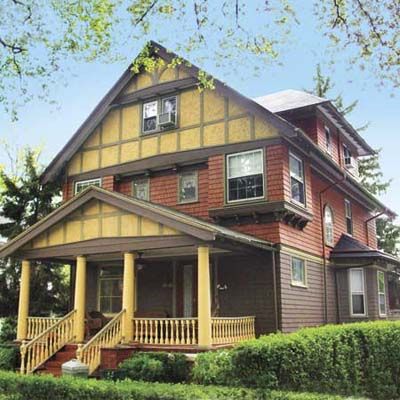
Richmond Hill is as peaceful and laid back as Manhattan is chaotic and fast paced. That’s why it’s hard to imagine these two places are less than a 45-minute subway ride from each other. Established in the mid-1800s as one of New York City’s first planned communities, Richmond Hill was once home to thousands of Italian, Irish, and German immigrants looking to escape the crowded living conditions of the city. That escape was made all the more pleasant thanks to Forest Park—a 600-acre Frederick Law Olmsted urban retreat with horse trails, golf courses, and gardens—which borders the neighborhood.
The Houses:
The largest, most detailed homes are in North Richmond Hill, bordering the park, where many homes designed by famed New York City architect Henry Haugaard are located. His Queen Annes and Classical Revivals are known for their unique built-ins, enormous front porches, inlaid floors, and multicolored shingles. More modest Craftsmans and Victorians in the southern part of Richmond Hill start at about $250,000.
Why Buy Now?
New York real estate is as affordable as it’s likely to get, especially in the outer boroughs. The Richmond Hill Historical Society is drawing more attention to the neighborhood by sponsoring regular house tours and educating New Yorkers on the area’s unique history and architecture.
Among the best places for: Urban Suburbanites, Victorians, Walking, Food Lovers, The Northeast, Editors’ Picks
The Dundee Neighborhood, Omaha, Nebraska
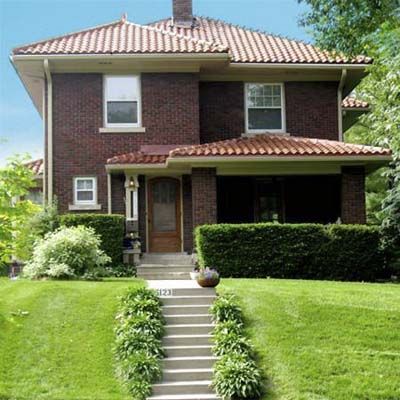
Don’t let the fact that one of the richest men in the world, Warren Buffett, lives here scare you off. He bought his house years ago for about $31,000. Now, there are historical properties that pass the million-dollar mark, but there are also plenty of more affordable houses. Established as an independent village just west of downtown in the late 1800s, Dundee had houses that were required to be at least 25 feet from the street and were priced high. By the time the village was annexed by Omaha in 1915, the place was filled with handsome Craftsmans and foursquares; Dundee South, established later, is known mostly for its Tudors, Colonial Revivals, and Prairie-style homes. The neighborhood is within walking distance to trendy restaurants, music venues, and taverns. Dundee is also bordered by two of the city’s largest parks. Nearby Fortune-500 companies, such as Union Pacific, and the University of Nebraska Medical Center are draws for business and medical professionals.
The Houses
Housing prices start at $150,000. At press time, a 1,400-square-foot Arts and Crafts home was on the market for $154,900. A 2,500-square-foot Tudor with natural oak trim and built-ins and a large sleeping porch was on the market for $195,000.
Why Buy Now?
Omaha has recently become known as a hip, indie-spirited place, primarily around the city’s Old Market area, near Dundee, which is packed with studios, museums, music venues, pubs, and clubs. Heck, even people from big cities are moving here to take advantage of cheaper art and music-studio space.
Among the best places for: Families, Arts and Antique Lovers, Urban Suburbanites, The Midwest
Houston Heights, Houston, Texas
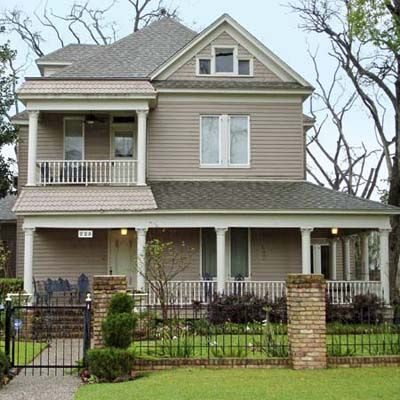
Love living in small-town suburbia but occasionally long for the hustle and bustle of the city? Houston Heights might be the neighborhood you’re looking for. Just a couple of miles from downtown Houston, this serene enclave features massively turreted Queen Annes along stately boulevards and comfy bungalows tucked away on quiet streets lined with expansive live oaks. Houston Heights was developed in 1886 as a “utopian” community by self-made millionaire Oscar Martin Carter and his Omaha and South Texas Land Company. The Houston Heights Association, a nonprofit devoted to preserving the nabe, is trying to hold on to Carter’s vision by protecting against overdevelopment and bringing the community together with holiday home tours, craft markets, and fun runs.
The Houses
The large sampling of architectural styles is what makes Houston Heights unique. Heights Boulevard is lined with Queen Anne and Colonial Revival mansions, and streets to the east and west feature a number of Craftsman bungalows and Tudor Revival cottages. At press time, there were more than 60 properties available, ranging from $200,000 to $700,000.
Why Buy Now?
Most of the older homes have already been restored, so maintaining their historic integrity is the only work required. Property-tax exemptions are available for restoration work on homes in the neighborhood’s city-designated historic districts.
Among the best places for: Urban Suburbanites, Cottages and Bungalows, Families, Single Women Buyers, The South, Victorian-era Homes
Elgin, Illinois
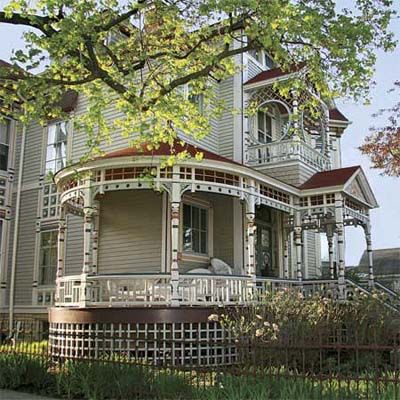
Not for one second did Brenda Hennessey imagine herself living in Elgin, Illinois. Growing up in nearby Schaumburg in the 1980s, she’d heard the city had a reputation for being grungy, rundown—even a bit dangerous. A few years ago she made a pit stop here while riding the Fox River Bike Trail, which runs 33 miles through the Chicago suburbs. It was then she realized that either Elgin’s nefarious image was greatly exaggerated or things here had changed dramatically for the better. In the market for a house, Brenda did some research and discovered she could get more bang for her buck in Elgin than in other Chicago-area towns. She soon snatched up a late-19th-century brownstone in the Gifford Park neighborhood for $198,000. “Elgin is beautiful,” she says. “It’s walkable and safe, with plenty of bike paths.” Brenda, now pregnant, and her husband, Evan, are looking for a larger house, hopefully one of the city’s cherished Queen Annes, which start at $100,000. That’s the great thing about Elgin, says Brenda. You can buy a starter home, upgrade to a virtual mansion to raise your kids, then empty-nest it down to a bungalow when you retire.
The Houses
Some of the city’s most handsome Queen Anne, Tudor, and Gothic Revival homes are found in the Northeast neighborhood, which borders downtown and contains two historic districts, most notably Elgin’s oldest neighborhood, Spring-Douglas, a National Historic District. Here, a 2,000-square-foot Queen Anne can be had for $150,000 to $500,000, depending on its condition.
Why Buy Now?
The best reason is summed up by Elgin resident Fran Cella: “No one really knows about us yet.” Property values in the historic districts remain steady, thanks in part to the city’s proximity to Chicago. The city is offering grants to help buyers restore single family homes that were broken up into multifamily units.
Among the best for: Fixer-Uppers, Families, Bargain, First-Time Buyers, Bedroom Communities, Healthy Living, Walking, Urban Suburbanites, The Midwest, Dog Lovers, Financial Help for Homeowners, Editors’ Picks
Woodruff Place, Indianapolis, Indiana
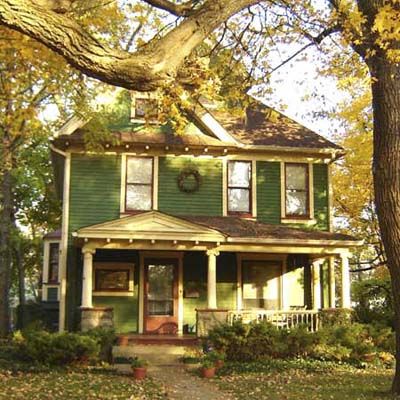
Founded in 1872 by New Yorker James O. Woodruff, this old suburb, about a mile east of downtown Indianapolis, was a self-governing town for more than 80 years. Traces of this autonomy are still evident in the tight-knit community, for Woodruffians are active in hosting social gatherings and bimonthly neighborhood meetings. Take a walk around town and you’ll see broad boulevards, decorative fountains and urns, and statues surrounded by magnolia and oak trees. The inspiration for Booth Tarkington’s The Magnificent Ambersons, Woodruff Place is a quintessential Midwestern town and was added to the National Register of Historic Places in 1972.
The Homes
The oldest houses are Eastlakes, Stick Victorians, and Queen Annes, though Woodruff Place is also home to many Georgian Revivals, English Tudors, Bungalows, American Foursquares, and Colonial Revivals. Fixer-uppers can be purchased for less than $100,000.
Why Buy Now?
The stately homes in Woodruff Place were built for the elite but are now available at moderate prices. Many large Victorian-era homes that were divided into apartments in the 1960s and ’70s can be returned to single-family houses.
Among the best places for: Families, Bargains, The Midwest, First-Time Buyers, Victorian-era Homes, Urban Suburbanites
Covington, Kentucky
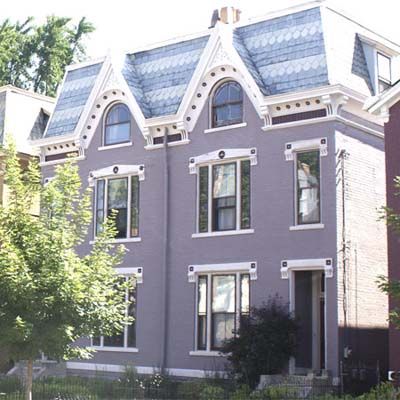
Covington is a historic small town just across the Ohio River from a historic big city (that’d be Cincinnati). While the Greek Revival and Italianate architecture is what draws most people here, Covington is also home to MainStrasse Village, a 19th-century German neighborhood and National Historic District well known for its restaurants, pubs, and outdoor cafés. Many also flock here for Covington’s spirited festivals, including Bluegrass State versions of Mardi Gras, Oktoberfest, and Goettafest, named for the wildly popular steel-cut oat sausage made here.
The Houses
Most homes were built between the 1840s and 1920s and include Greek Revivals with double-tiered porches, brick Italianates, and Queen Annes. A historic river mansion will run you a cool million or more, but you can get a lovely Italianate townhouse from $200,000. One-story brick Italianate cottages and shotgun-style homes run between $85,000 and $100,000.
Why Buy Now?
Houses here are beautiful, solid, and cheap. The federal and state governments are trying to lure artists and small-business owners by offering substantial tax incentives to those who restore older income-producing properties. Covington is a New Urbanist’s dream, with shops, groceries, parks, bike trails, and the City of Cincinnati, all within walking distance.
Among the best places for: Waterfront, Fixer-Uppers, First-Time Buyers, Small Business Owners, The South, Urban Suburbanites
Lower Garden District, New Orleans, Louisiana

Living in—as opposed to visiting—New Orleans is not for everyone. But if you have a “laissez les bon temps rouler” attitude and crave a place that feels more like a Caribbean island than an American city, then the Lower Garden District is where you want to be. Just a few stops on the St. Charles streetcar from its more affluent neighbor—the famed Garden District—the LGD, with its low-key restaurants, bars, shops, and cafés is a leafier and sultrier version of New York City’s Lower East Side.
The HousesNew Orleans’s shotgun-style houses are abundant, and the Lower Garden District has one of the largest concentrations of antebellum Greek Revivals in the South. They are typically two or three stories with double- or tripled-tiered porches. Many have been divided up into condos or apartments. A one-bedroom condo in a Greek Revival can be had for about $160,000, while one in a double shotgun will run you $200,000 or more. Single-family Greek Revivals start about $1 million.
Why Buy Now?The Lower Garden District did not flood after Hurricane Katrina, and that allowed this up-and-coming neighborhood to hit the ground running after the storm. The real estate bubble that took place here is finally beginning to burst, so prices are down to more reasonable levels.
Among the best places for: Arts and Antique Lovers, Foodies, Fixer-Uppers, Green Thumbs, The South, Urban Suburbanites